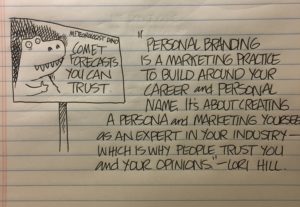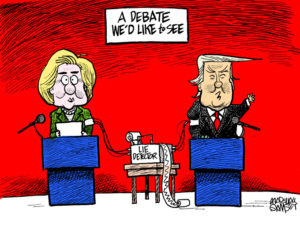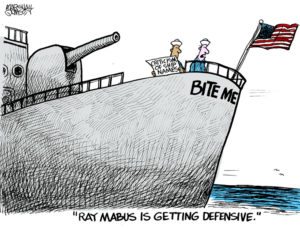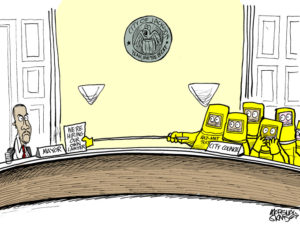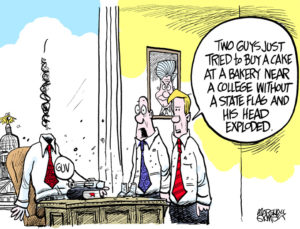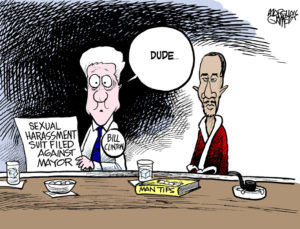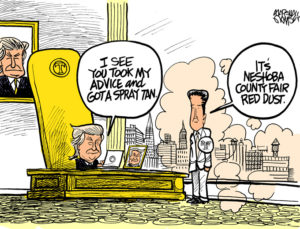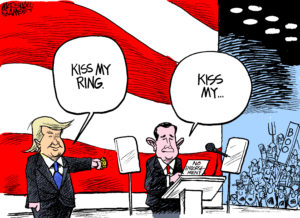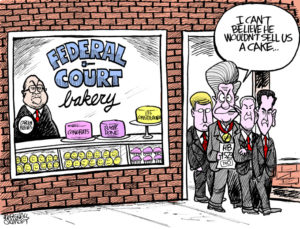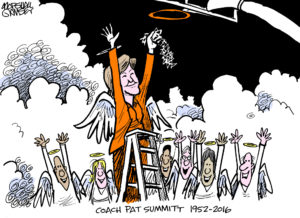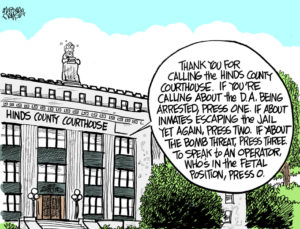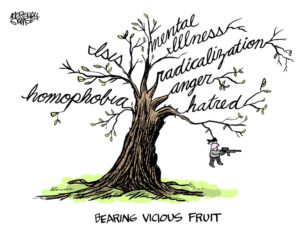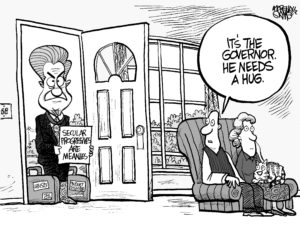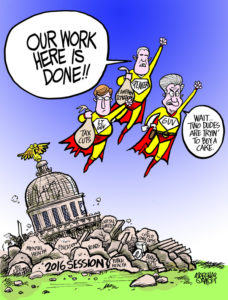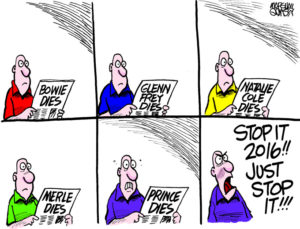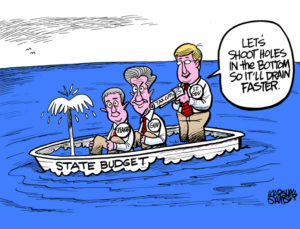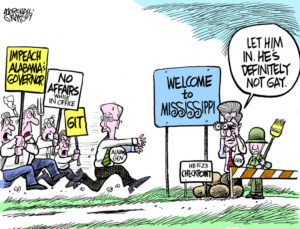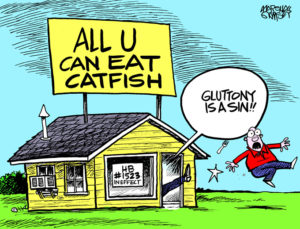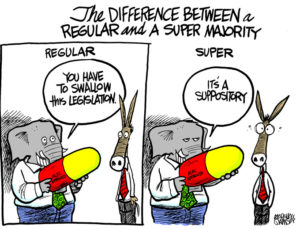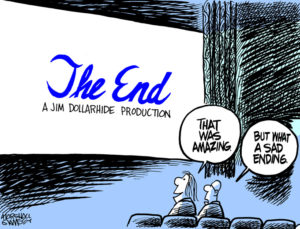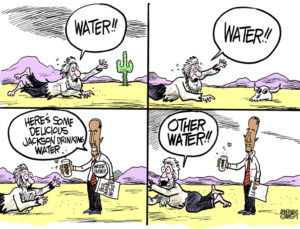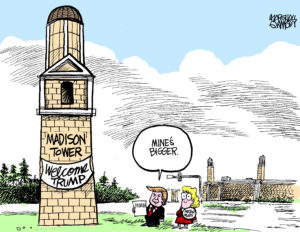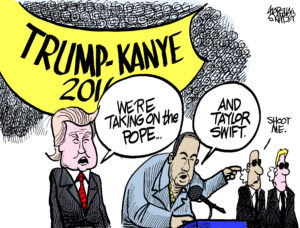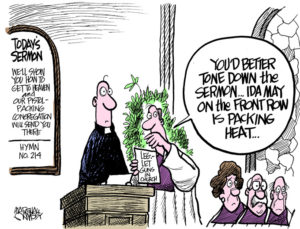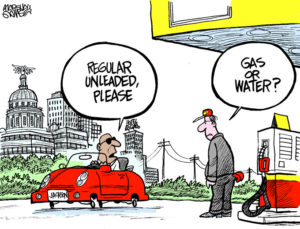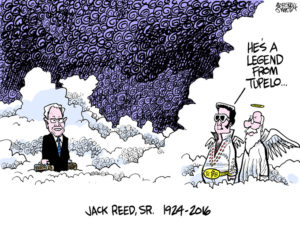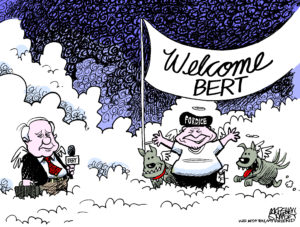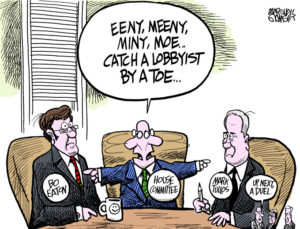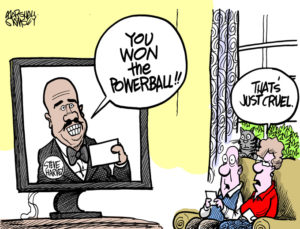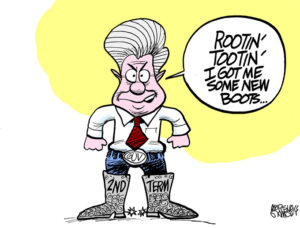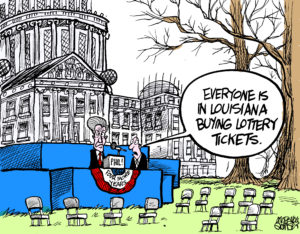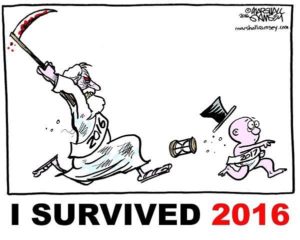“Personal branding is a marketing practice to build around your career and personal name. If is about creating a persona and marketing yourself as an expert in your industry, which is why people should trust YOU and your opinions.” Lori Hill
Bibliography.
The 22 Immutable Laws of Branding: How to Build a Product of Service into a World Class Brand. Al and Laura Ries. Harper Business 2002
Beyond Powerful Radio: A Communicators Guide to the Internet Age – Valerie Geller. Focal Press 2011
Impressions – The Power of Personal Branding in Living an Extraordinary Life. Coyte G. Cooper, Ph. D. Smashwords Edition 2014
Jab, Jab, Jab, Right Hook – How to Tell Your Story in a NOISY Social World. Gary Vaynerchuk. Harper Business November 26, 2013
The Art of Social Media: Power Tips for Power Users. Guy Kawasaki Portfolio. December 4, 2014
Platform: Get Noticed in a Noisy World. Michael Hyatt. Thomas Nelson. May 21, 2012
Tipping Point – How Little Things Can Make a Big Difference. Malcolm Gladwell. Little Brown 2000
The 22 Immutable Laws of Branding: How to Build a Product of Service into a World Class Brand. Al and Laura Ries. Harper Business 2002
• Branding program should be designed to differentiate your product from all the other cattle on the range. (Even if they all look alike)
• Create in the mind of the prospect the perception that there is no product on the market quite like your product.
•Marketing is not selling. Marketing is building a brand in mind of the prospect.
• 2002 – Decline of selling and function is slowly sinking like the Titanic. Most products are services are bought – not sold.
• Any proper noun is a brand – therefore you are a brand.
• You don’t want to be a commodity.
1. THE LAW OF EXPANSION.
The power of ta brand is inversely proportional to its scope. Expansion undermines the brand name in the mind of the consumer.
If you want to build a powerful brand in the minds of consumers, you need to contract your brand, not expand it.
Keep it simple. Focus
2. THE LAW OF CONTRACTION
A brand becomes stronger when you narrow its focus. Example: Howard Shultz, founder of Starbucks – was just a coffee house. Don’t try to be everything to everyone. Stand for something – don’t fall for everything.
3. THE LAW OF PUBLICITY
The birth of a brand is achieved with publicity, not advertising.
The best way to generate publicity is by being first. Being first means that you are a brand new category. People like to talk about what’s new. It’s hard to capture lighting in a bottle twice. Iphone – Apple USED to do this. They either introduced a new category or revolutionized existing ones.
• What others say about your brand is much more powerful than what you say about it yourself. (SOCIAL MEDIA). PR>Advertising.
4. THE LAW OF ADVERTISING
Once born, a brand needs advertising to stay healthy.
a. Introduction of a new category.
b. Rise of a company that introduces it. Awareness.
Advertising is a powerful tool, not to build leadership of a fledgling brand but to maintain that leadership once it is obtained.
5. THE LAW OF THE WORD
A brand should strive to own a word in the mind of a consumer.
What do you think of when you hear Xerox? Kleenex? Coke?
Can be also on a personal front, too. Tiger. Lance Armstrong. Beyonce. Locally: Rick Cleveland. David Hartman (WAPT Weather). Barbie Bassett.
Courtney Cronin redefined her beat as a high school sports reporter by using platforms that the athletes her students used to cover them She now is covering pro teams for the San Jose Mercury (Bay Area News Group) Her name became something to the people she covered.
6. THE LAW OF CREDENTIALS
The crucial ingredient in the success of any brand is its claim to authenticity. Customers are suspicious. Credentials are the collateral you put up to guarantee the performance of your bran. Have the right ones, your prospect is likely to believe almost anything you say about your brand.
Ways to establish it:
a. Leadership. If you don’t have it, create your own category.
b. Find a niche category.
Highest-rated newscast. States largest newspaper. The number one drivetime show. Two-time Pulitzer Finalist
7. THE LAW OF QUALITY
Quality is important, but brands are not built by quality alone.
Quality (or the perception of it) resides in the mind of the buyer – you have to build it in the mind of the consumer. Goes back to the LAW OF CONTRACTION – specialist is seen as knowing more than a generalist.
8. THE LAW OF THE CATEGORY
A leading brand should promote the category, not the brand.
Build a brand in a non-existing category, to build something out of nothing. You have to do two things at once.
a. Launch in a way to create a perception it was first.
b. Promote the new category. Apple failed to do this with the Newton. People didn’t know what the product was for.
9. THE LAW OF A NAME
In the long run, a brand is nothing more than a name.
a. Short-term – A brand needs a unique idea of concept to survive. It needs to be first in a new category.
10. THE LAW OF FELLOWSHIP
In order to build a category, a brand should welcome other brands.
a. Choice stimulates demand.
b. Consumers have choices even when there is no competition. If no choice, customers are suspicious.
c. Welcome healthy competition
d. No brand can own the entire market.
11. THE LAW OF EXTENSIONS
The easiest way to destroy a brand is to put its name on everything. GM example.
12. THE LAW OF THE GENERIC
One the fastest routes to failure is giving a brand a generic name
Federal Express became FedEx
Kentucky Fried Chicken – KFC
13. THE LAW OF THE COMPANY
Brands are brands. Companies are companies. There is a diffence. Brand names should almost always take precedent over company names. Brand from a consumer’s view, not the CEO’s view.
14. THE LAW OF SUBBRANDS
What branding builds, subbranding can destroy. It’s an inside-out branding strategy that tries to push the core brand into a new direction. When you feel the need to create subbrands you’re chasing the market, not building a brand. The essence of a brand is some idea or attribute or market segment you can own in the mind of the consumer. Subbranding is a concept that takes the brand inexactly the opposite directions. Subbranding destroys what branding builds.
Just think like a consumer and your brand will be more successful.
15. THE LAW OF SIBLINGS
There is a time and a place to launch a second brand. Launch sibling only if it can create a new category.
16. THE LAW OF SHAPE
A brand’s logotype should be designed to fit the eyes (thus horizontal). Both eyes.
17. THE LAW OF COLOR
A brand should use a color that is opposite to its major competitors.
a. White – purity
b. Black – color of luxury (is orange now, too?)
c. Blue – leadership and stability
d. Purple – Royalty
e. Green – environment and health
f. Red – attract attention (Power ties. Coke)
18. THE LAW OF BORDERS
There are no barriers to global branding now. A brand should no know borders.
a. Keep brands narrow focus in its home country.
b. Go Global to expand the brand’s footprint.
“Grow where you’re planted.” Mike Frascogna II
19. THE LAW OF CONSISTENCY
A brand is not built overnight. Success is measured in decades, not years.
The most frequently violated law is the LAW OF CONSISTENCY.
A brand can’t get into the mind unless it stands for something.
Markets may change, but brands shouldn’t
Limit your brand. Limitation, combined with consistency, is what builds a brand.
20. THE LAW OF CHANGE
Brands can be changed, but only very frequently and only very carefully. Brand changing does not occur inside a company. Brand changing occurs inside the mind of the consumer. So if you keep your sights on your target, the consumers mind will eventually change.
Signs it needs change:
a. Your brand is weak or nonexistent in the mind of the consumer.
b. You want to move your brand down the food chain,
c. Your brand is in a slow-moving field and the change is going to take place over an extended period of time.
21. THE LAW OF MORTALITY
No brand will live forever. Pontiac. Oldsmobile. Saturn. Jitney Jungle. Euthanasia is often the best solution. Recently Tribune Newspapers changed their name to Tronc. It was an attempt to reflect an change in the company’s focus. But turned out to be a disaster.
22. THE LAW OF SINGULARITY
The most important aspect of a brand is its single-mindedness. What’s a brand – a proper noun that can be used in place of a common noun.
Impressions – The Power of Personal Branding in Living an Extraordinary Life. Coyte G. Cooper, Ph. D. Smashwords Edition 2014
PHASE1 – Foundation elements to Extraordinary Branding (Early Planning).
“Your brand is what people say about you when you are not in the room.” Jeff Bezos, Founder of Amazon and owner of The Washington Post
Personal branding is not a quick strategy to impress people in an inauthentic manner.
What exactly is Personal Branding?
Personal Branding is about building a reputation with the people around you that will allow you to cultivate and enhance relationships that open up opportunities in your life. It allows us to add meaningful value to other people’s lives, which often results in adding value to our own lives.
Personal Branding is a lifestyle that you commit to living every single day.
“It is extremely difficult to build positive relationships with people and cultivate a strong personal brand when you cannot get yourself to live the way you know you should be living. It’s about learning to lead yourself. One of the most important elements of personal branding is learning to live the values that are more important to you on a daily basis.
Follow-through is often the most difficult element of personal branding because it takes a strong focus to pursue your vision when things are not going smoothly.
Once you know exactly who you would like to become, it is about taking the time to know to get there and then simply having the self-discipline to do the little things on a consistent basis.
Difference between ideas and implementation – ideas are nothing if you are not able to implement them successfully immediately and for the long run. URGENCY matters!
“Whatever course you decide on, there will always be someone to tell you that you are wrong.” Ralph Waldo Emerson.
Personal branding is a concept that has potential to change your life in extraordinary ways – but it takes a major commitment on your part to make it happen. You must build relationships.
1. Negative reactions: Not returning calls or emails. Terse exchanges. Things like this make an impact.
2. People think you are aloof or uncaring.
3. Make email log and react immediately.
CHAPTER TWO
You already have a brand and probably just don’t know it.
Everyone has a brand. Branding has broad-reaching implications. It involves the thoughts that come to mind when others come into contact with you, then you quickly realize that this relates to each key relationship in your life.
Branding is a daily consideration like brushing your teeth and not just a professional one. IF you build a positive one: People will be there to help you. If you have a negative one: You’re on your own when the poop hits the fan.
Our interactions always matter with people and when we take control of them with a vision in a mind, we have an opportunity to make a positive impact on a wife range of people.
Make a habit of doing this on a wide-scale scale. Take control in a proactive manner.
“You can have anything you want in life if you just help other people get what they want.” Zig Ziglar
So who do you want to be? Pretend you’re at your own funeral. Imagine what people are saying about you. Then imagine what you’d like them to say about you. How are you going to change?
Take time to think about exactly who you want to be for others in your life.
Be proactive about brand building.
“Create the highest, grandest vision possible for your life because you will become what you believe.” Oprah.
The secret ingredient is passion. Passion gets you through the long nights when you don’t want to be working in the trenches. Remember taking the worst class ever? Even going to class sucked.
FIVE POINTS of PASSION
Best way to learn the things we are most passionate about it through constant learning and reflection. Ways to do this: Internships. 30 minute of days reading about something new. Write in a journal for half an hour about your reflections on the day.
Lesson #1: Proof that others can achieve means you can achieve also great accomplishments. You have to believe that you can. If hesitant, ask “Why not me?” You have to get your mind out of the way.
Lesson #2 – Take first step without seeing the path ahead of you. Must keep pushing when the next step is not certain. Best option is to learn from process. KEEP moving.
Lesson #3 – “All dreams can come true if you have the courage to pursue them.” Walt Disney. When you find your passions and align them with your strengths, you can achieve most things in life if your – as my old football coach would always sa y – your mind is right.
Lesson #4 – if you don’t love it , you won’t challenge status quo. You must love your goals and vision or your won’t chase it with passion. Life is too short to wish it away and live far below your full potential. Passion takes persistence. You have to work hard to be passionate. Make passion part of your personal brand and strive to inspire others to live a life that is worth living.
CHAPTER 4 — the Virtue of Values: Creating a Structure to Realize YOUR Vision.
Vision along will not allow you to realize your full potential when it comes to personal branding. Why? It doesn’t provide framework. This is where values come into play.
1. Once you know your vision, the next step is to identify the things you need to reach your full potential.
2. You must know the values you will need to reach your full potential.
Ask yourself this: What would you like to achieve in the next five to 10 years?
Values are the core beliefs and philosophies that are most important in our lives.
1. Study other people who are successful and determine the things that they do on a daily basis. Charlie Daniel example: I looked to Charlie as an example of a cartoonist (and man) I wanted to be like. He believes in community. Now so do I.
2. Embrace a marketing mindset to consider what your key market values are. (People who are most important to you. Or people who you can influence.)
3. The third and most effective way to cultivate the central core values you need in your life is through reflection. You go through life on autopilot most of the time. And where you are today is because of past values and actions.
Values are elements that we would life to become a part of our brand through consistent modeling. Values also can be daily checkpoints.
PHASE II – Steps to making an extraordinary brand a reality
CHAPTER 5 – Master the art of modeling values.
“It’s a matter of doing what you do best and not worrying what the other fellow is going to do.” John Adams.
Branding is a daily pursuit in which you need to take control of your individual interactions.
Learn to live single days extraordinarily well in key value days together. You will be known as a person who follows through with intentions.
Strive to make your values a habit. Challenge yourself on an hourly basis.
INCONSISTENCY IS DETRIMENTAL TO YOUR BRAND>
But if you do fall short, get back on track.
When you are saying one thing and doing something else, people will question your integrity. (Tiger. Lance)
1. Put your values in place and make them visible. Start your day by reading over them for five minutes.
2. Invest in reinforcement initiatives. (Bootcamp)
3. Recognize that repetition is your friend.
4. Spend time learning from other masters of modeling.
5. End each day by asking simple question “Did I do what I needed to do today?”
CHAPTER 6 – Strive for Specificity in Branding Efforts
“Be a yardstick of quality. Some people are not used to an environment where excellence is expected.” Seth Godin
“Brand is a set of memories, stories and relationships that taken together account for a consumer’s decision to choose one product or service or another.”
You are able to create a brand that consumers are loyal to leads to the greatest brand enhancer or all — Word of mouth advertising.
1. Vision – narrow in on a few values that guide their actions on a daily basis. Apple’s were innovation, simplicity and user friendliness.
2. Product – must have a product that is positioned specifically for your key target markets (audience). YOU MUST ADD VALUE TO CUSTOMERS LIVES.
3. Marketing – Make sure efforts line-up with vision.
4. Customer service. I remember a tag-line at my cousin’s Chevrolet dealership: We do what we say at West Chevrolet. What combatted negative imagine car dealerships had.
5. Cvreative bundline – make your products interact. Me – TV, Radio, books, cartoons and social have a golden thread of my values.
6. Create an above and beyond mentality.
Chapter 7 – Aspire for authenticity in daily interactions
“To Be yourself in a world that is constantly trying to make you something else is a major accomplishment.” Ralph Waldo Emerson.
If you choose values you don’t believe in, you will eventually fail because your intentions will comes across as inauthentic. You constantly must make sure there is alignments between your values and your daily actions.
1. Don’t be THAT person.
2. Get to know who you currently are.
3. Acknowledge Gaps in who you are and who you want to become (journaling)
4. Don’t fake it to try to make it.
5. Learn to be yourself
6. Stay away from being critical of others.
7. Time wasted on negativity equals time not building. We spend 80% of our day in negative thoughts – according to the National Science Foundation. If you are awake 16 hours per day, that’s 12.8 hours. THAT’s 4672 hours per year!
CHAPTER 8 – Be mindful that branding is not about you.
1. Make things about others. Don’t make things about yourself. You aren’t that interesting.
2. An “All IN” Branding mentality – be authentic 100% of the time. Make unique experience to every person you meet.
3. Be a Master at Making an Impression. Be passionate about doing everything in tehri power to live as well as they possibly can.
4. The Secondary Strategy: Capitalize on segmentation – prioritize the importance of individuals in your life. Segment by identifying key target markets and considering the interests of the key segments. It saves you time and energy
5. Determine strategies to position your product – by spending time finding out what your key segments value, you provide yourself with information that is necessary for determining how you will proceed with personal branding initiatives.
CHAPTER 9 – Cultivate a care mindset for people
“To add value to others, one must first value others.” John Maxwell.
Saying and doing are two different things. Speak with your actions. People don’t care how much you know until they know how much you care.” Caring is not a sign of weakness.
CHAPTER 10 – insist on being extraordinary at individual interactions.
“Its’ the little details that are vital. Little things make big things happen.” John Wooden.
Find a ways to focus on the present.
1. Learning to listen intently
2. Read body language
3. The mentality of making an impression
4. The value of visualization in branding. Take five to ten minutes focusing on things you are grateful for in life. Focus on the vision. Then Revisit values.
CHAPTER 11 Capitalize on Key Brand Interaction Spots
The Salience of Social Media
1. Everytime you post something, people take it in and intuitively make an assessment about the type of person you are.
2. If you are posting positive things that add value to people’s lives, you will gain followers.
3. All posts matter.
Rule #1 – Be in the Biz of Branding – Social Media an extension of who you are .
Rule #2 – No privacy. Know every post counts toward your reputation.
Rule #3 – Practive the Golden Rule. Unless you’re Donald Trump of course.
Rule #4 – Think twice when RT’ing something.
Rule #5 – Have a cool off period. Don’t waste energy on Twitter wars.
Rule #6 — Cut out controversy, unless that’s your schtick.
Rule #7 – Build a network. Seek out others and see what they do.
Email:
Avoid clutter. Respond immediately. Follow-up pronto. Under promise – and then over deliver.
And never forget the power of a handwritten note.
CHAPTER 12 – Set a unique Standard of Excellence.
“Success is the master application of the fundamentals on a daily basis.” Robin Sharma.
You must commit to setting a unique standard of excellence that will influence others around you. 1. Choose right values and becoming extraordinary at modeling them every single day as well as you possibly can.
CHAPTER 13: Above and Beyond Mentality: 10 Commandments for building a personal brand.
1. Aspire to be awesome in all you do.
2. Take an active interest in testimonials (word of mouth promotions)
3. Develop an ability to add serious value.
4. Learn to be a likeable person
5. Do your best to be kind but not to please everyone
6. Thrive at concept of “Thin splicing – the ability to make instant, sound decisions based on experiences in life.”
7. Never underestimate value of an individual action
8. Make each day a masterpiece.
9. Make reflecting and evolving a part of your daily life.
10. Learn to be yourself.
CHAPTER 14 – Make it happen.
10 PERSONAL BRANDING SECRETS to USE FOR SOCIAL MEDIA – Lori Hill, June 20, 2016. Sproutsocial.com
Personal branding is a marketing practice to build around your career and personal name. If is about creating a persona and marketing yourself as an expert in your industry, which is why people should trust YOU and your opinions.
1. Meteorologists
2. Specialty reporters
3. Columnists
4. Talk show hosts
5. You get my point.
“To be in business today, our most important job is to be head marketer for the brand called you.” Tom Peters.
Personal brand on social media is important because it can grow – and go – with you. Puttling more effort into personal branding will allow you to easily branch out into other endeavors without having to build and audience from the ground up.
1. Be consistent with your profile
2. Be consistent with your tone
3. Decide how you want to be known
4. Create unified image templates
5. Post regularly across all channels and use social media content calendar
6. Engage with followers
7. Show human side
8. Monitor who is talking about you
9. Document everything about your personal brand
10. Continue to learn and grow
Five Mistakes – ways you could be damaging your personal brand in 2017
1. Oversharing on social.
2. Being online wall flower
3. Lacking in express purpose
4. Venturing into taboo territory (unless you are an editorial cartoonist)
5. You have to take time to build online presence.
Mel Carson – Huffington Post.com, Delightfulcommunications.com
HOW TO DEVELOP AND CRAFT YOUR PERSONAL BRANDING STATEMENT
Three-step process
1. Start with 5 in 5 stidown with partner and talk for five minutes.
a. Ask about their educational experience
b. Their work experience
c. What they love about what they do.
d. What they find hard
e. Where they want to be in three years.
2.Use that information and your internal compass to define and establish a professional purpose (why we do what we do and why we get out of bed.)
3. Use those two steps to create a PERSONAL BRANDING STATEMENT which contains three main elements.
a. Your mission – a sign post
b. Have value – your experience, time in industry, your education. Ect
c. ZERO hyperbole buzzwords, etc. Cut the BS
Personal Branding Statement is shop front to people who are looking to hire you.
Jennifer Gare Hellum, Feb. 11, 2005. Brandmeajournalist.com
Personal branding is about authentically communicating your unique value as a journalist among your professional – category peers and backing up that brand with quality work to build credibility and tryst among your audience and collegues.
Now lets talk about a bad branding situation.
“On Saturday, NBC Nightly News Anchor Brian Willaims announced that he would be temporarily be vacating his chair because his personal brand recently came in direct and injurious contact with his professional obligations…”
Huh?
That’s BS. His personal brand was supposed to be “Integrity and the honest deliever of the news.” His crafted brand – wanting to be an interesting entertainer (he wanted the Tonight Show) was out of synch with his brand.
Ann Friedman cjr.org May 8, 2014
News organizations have no ideas how to manage personal branding
This story kind of made me chuckle. It makes it sound like baseball teams when free agency came along.
Personal Branding is a venerated skill of Journalism 2.0 – but who outlets that are their own brand, this can cause reconciliation problems. Interesting set of pros and cons:
PRO
Can bump traffic with single hire
CON
Can take that traffic when if they jump ship
PRO Audience engagement that dry stories don’t get.
CON
When Outlet has to defend when something goes awry.
Five Steps that help you build your Personal Brand as a Journalist
Mohamed Omar – Egypt Country Media Consultant
1. Building your own identity: Planning and preparation.
a. To have unique identity as a journalist, you need to identify your strengths – requires honesty when expressing your true image.
1. What are you good at
2. What are your best at
3. What’s your field of interest now
4. What will it be in the future.
5. Are your goals feasible?
6. What criteria do you use to measure your success/failure in actualizing these goals.
“An example of how you can attract readers – presenting serious journalism and refraining from pointless news.”
2. Creating e-portfolios: Personal Blog in addition to social media.
a. Update often
b. Write about your field of experience
3. Social networking sites.
a. build a community by using Facebook, Twitter, etc
b. Make your own publicity
c. Create unique content to promote you as a journalist
4. Engage surrounding community. Help support others, no matter what.
5. Attitudes and positions: Be Consistent.
Mediashift.org Alfred Hermida
Journalism Students Need To Develop their own Personal Brand
Always ask how many own their name as a domain name.
Your online presence should show who you are, your interests and backgrounds – and showcase your best work (your personal brank as a journalist)
Why is this important? There’s a shift away from journalistic institutions and toward individual – discovered in 2009 by project for excellence in journalism’s state of the media report in 2009 (SEVEN YEARS AGO!!!!)
1. Blog.
2. Social Media and leave comments.
3. But be authentic.
Building your brand as a journalist:
1. Know yourself
2. Know your goals and values
3. Know how, where and to whom to communicate those qualities effectively.
“Be semi-obnoxious on social media. Don’t be afraid to repeat your self if you have good content.” Illana Kowarski
There have been hundreds of thousands of words written on ESPN closing Grantland, but most of them have missed the largest issue — the site was losing money.
By Clay Travis Nov 2, 2015 at 1:37p ET
There have been hundreds of thousands of words written on ESPN closing Grantland, but most of them have missed the largest issue — the site was losing money.
With a staff somewhere between 42 and 54 people Grantland produced, according to James Miller’s Vanity Fair piece, somewhere in the neighborhood of $6 million a year in revenue. That’s a tiny amount of revenue for that many employees to produce. Putting that into perspective, that is less revenue than WJOX, a sports talk station in Birmingham, Alabama produces a year. The station I used to work for, 104.5 the Zone here in Nashville, also produces more revenue. Unlike Grantland, both of these sports stations are also very profitable.
When two single sports talk stations in mid-size markets produce more revenue and profit than a site like Grantland, located on the front page of ESPN.com, there are larger issues at play than Bill Simmons and editorial differences and lost jobs for the writers. Put simply, Grantland failed because it lost money and ESPN decided that the benefit Grantland brought to its brand wasn’t worth the cost it extracted. When you look at it from that perspective, all the drama and social media ire — “How could ESPN do this?” — is really just about dollars and sense.
This wasn’t a corporate vendetta or a hatchet job designed to inflict the utmost pain on a former employee, it was a company, ESPN, under pressure to cut costs based on the massive guaranteed payments to sports leagues for rights fees at the same time that cable and satellite revenue is declining, cutting costs.
Bottom line: If you want creative freedom in today’s sports media world, you better make money for your bosses.
And here’s the simple fact — the vast, vast majority of sports writers today don’t make money for their bosses.
Since ESPN’s announcement I’ve gotten a bunch of emails and Tweets — the ones that weren’t Ohio State fans calling me gay, anyway — asking me what I thought about Grantland and what the demise of the site meant for sports media in general. I thought about it over the weekend a great deal and the image I couldn’t get out of my head was the idea of modern day sports writers as the scouts in the movie “Moneyball.”
Just like those baseball scouts for the Oakland A’s, most sportswriters are operating with an antiquated notion of what their job is, and they have no concept how to use the tools around them to make them better at their job.
But before I write about this idea more, let’s talk about the sportswriting business model from the time newspapers were invented until around 1998. How did the business work?
You wrote for a newspaper. What paid your salary? Ads in the newspaper, primarily classified ads, which were the most profitable part of the business. From a business perspective the newspaper was just a means to deliver advertisements to customers. No one had any idea what people actually read. Writers and editors decided what they thought people wanted to read and then they wrote the articles. Most feedback was internal, your co-workers or bosses praised a story, the printing presses kept running, you had a hell of a business model to rely upon. Your salary wasn’t determined based on any diagnostic analysis of your talent or your readership, it was based on what editors thought.
That’s because every single newspaper was its own media island. You competed with people in your city. If you were in a big enough city, there might be a competing newspaper. But that was it. You owned your market. If you didn’t like the writers in your town, good luck finding someone competing with them.
I’ve written before about my experience starting college in 1997. It was a fascinating time to begin college because everything was changing rapidly. I went to George Washington University without ever having had an email address. We didn’t have the Internet at home. The only newspaper I’d ever read was the Nashville Tennessean and the Wall Street Journal, which arrived a day late in the mail at the local library. I loved reading newspapers, even as a kid. Hell, I still read actual newspapers. I prefer print over digital even though I make a living writing online.
That first week of college in Washington, D.C. I started reading the Washington Post and was immediately blown away by how good Tony Kornheiser and Mike Wilbon were in its sports section. This was before Pardon the Interruption made both men famous. They were simply fantastic columnists. But unless you lived in the Washington, D.C. are you’d have no idea they existed. The Washington Post was a media island just like virtually every newspaper in the country. In theory, the best columnists were in the biggest cities that could pay the most money, but that wasn’t always the case. (Nashville’s David Climer, who I grew up reading, was always really good, for instance.)
I had no idea how good a newspaper could be until I got to college and started reading the Washington Post.
Newspapers were already starting to panic back then over young people not reading the paper — they weren’t yet terrified of the Internet yet, college kids just weren’t reading — so they would deliver free New York Times, Washington Post, USA Today and Wall Street Journals to our dorm lobbies. I’d read all four every day. My roommates would make fun of me lugging all the papers back up to our dorm room. One of my favorite things about flying cross country is that I’ll still do this. I’m the only guy or girl on the plane handing the stewardess five newspapers at the end of a flight.
So what happens beginning with the rise of the Internet?
Suddenly every writer is competing with every other writer in the country. (Note: this is slowly starting to happen with radio now too. It’s why I’m so bullish on the new Outkick the Show we’re launching soon.) The newspaper media islands turned into connected continents. Everyone could see what everyone else was writing. Instead of having 32 individual NFL writers making $90k a year, a guy like Peter King, the best of the group, could become the national NFL writing superstar and make $3 million a year.
Some people got it — Bill Simmons rode this digital train to a payday unmatched in today’s sportswriting universe — but more often than not most writers were confused and uncertain how to handle a changing world. That’s because writers, as a general rule, aren’t really that good at business. We chose words over math, after all.
Yet, the business had shifted ground beneath them and they were like the old baseball scouts on “Moneyball”, totally unaware how to respond to a competitive market that voted with readership. Their media islands were overrun. (There’s a definite irony here in that many of these same sportswriters watching “Moneyball,” and laughed at the old scouts way of thinking without realizing that they were, in fact, the scouts of their own industry).
I noticed this at FanHouse, the writers we hired from newspapers weren’t aware they had to promote their writing online. It was a totally different universe. The only promotion they’d needed for most of their careers was a byline in a paper. People either bought the paper or they didn’t. And if they did, no one had any idea which articles were the most popular. Even back then the vast majority of a newspapers articles weren’t read. Many writers were uncomfortable with self-promotion, which, honestly, is the lifeblood of Internet writing.
Moreover, most of those writers brought no audience with them. They’d been writing in newspapers and the newspaper readers weren’t the ones moving online. Most newspaper readers still read newspapers. For instance, my dad still clips articles for me. I don’t know when the last time he would have gotten online would be. He certainly doesn’t have an email address.
So the dark days came, layoffs, the destruction of the sportswriting business. Islands of sports commerce that had employed tens of thousands began to vanish as Craig’s List and other sites like it kill the most profitable arm of the newspaper, the classified ads.
The Internet, which for a time was to be a savior, turned out to be an executioner. Forecasts for Internet ad revenue plummeted because as opposed to in print where there’s a finite number of ads to sell in a print product, there’s an infinite amount of ad space online.
So what new business models developed to work for sports media on the Internet and replace the newspaper model?
Four, primarily.
a. Individual team sites with subscribers
These reporters are primarily focused on recruiting, coach searches, and moderating message boards. Readers pay a monthly subscription fee. Their audiences are tiny but passionate. Ten thousand paid subscribers a month, which is more than the vast majority of these sites actually have, will net you around $1.2 million a year.
The audience is small and the staffs are small too, after all, you’re mostly calling teenagers for recruiting updates to satisfy a rabid subset of the recruiting bases.
Think of it this way, in a hundred thousand seat stadium there are probably no more than 5000 subscribers in the crowd on any given Saturday, that’s 5% of the overall fan base.
b. Tech companies disguised as sports media companies.
These are the Bleacher Reports and SBNations of the world. They are sports media companies, but really what they’re selling is the technology behind their products. Writers don’t really matter much here. These businesses developed without paying writers. As they grew they’ve added paid writers, but not very many in the grand scheme of things.
Again, these are tech businesses that happen to cover sports.
c. Large media sites
ESPN.com, Yahoo, NBCSports.com, FoxSports.com, CBSSports.com.
These sites are, by and large, not very profitable.
d. Personality driven sites
Grantland, the Monday Morning Quarterback with Peter King, Adrian Wojnarowski’s site at Yahoo. Barstool and Outkick the Coverage, to a certain extent.
These are sites that build on an established audience for a personality and use that personality to grow additional writers.
That’s it.
After nearly twenty years, that’s where we are as an online business model.
There are four basic templates of online sports sites, and only one of them, the team sites, are based on subscriber revenue. Every other site is based on ad revenue. That’s because sports fans have been conditioned not to pay for any content they receive. (This is why consumers complaining about content is so contradictory. Does any other free to consumers business hear this all the time: “Why isn’t the content that we don’t pay for more to my liking?!)
So here’s where we circle back to Grantland and my thoughts on the market ahead.
Here are ten thoughts:
1. Writers have to understand the business of writing.
You are in the business of getting readers. If you are getting less than a million pageviews a month, you probably aren’t making your company money.
If you aren’t making your company money, you’re expendable.
You can lament the changes in sports media or evolve.
As media companies tighten their belts, why should they employ people who don’t make them money? You can’t rely on corporate largesse to keep your job.
Learn the business.
I’ll tell you a moment that crystallized the business for me, I was out on a radio sales call and a single advertiser cut a check for $50,000 in live ads I was going to be doing for the next six months. That was more than the radio station paid me at the time. And I’m sitting there thinking, “Holy hell, advertisers have a lot of money to spend. And they’re paying for my work and I get pennies of this? Why can’t I start my own site online and sell it to them too?”
I’m not a genius, I just understood the business that I was in and decided I was ready to not be an employee anymore.
2. Work harder than everyone else.
It sounds easy, but it isn’t. The harder I work, the more success I have. The simple fact is: most sportswriters don’t work that hard. Most people in every industry don’t work that hard. That gives you a chance to succeed.
Find me someone else who runs his own site, did over 20 hours a week of live radio, and traveled cross-country for TV.
Good luck.
Tons of people want to do this job until they realize the work involved to be good. I’ve never seen anyone be good at anything without working hard at it. Talent matters, sure, but drive matters as much or more than talent.
So work harder than everyone else.
I’ll give you a recent example. At this year’s SEC Spring Meetings a couple of writers pulled me aside and complained because I was Periscoping what the coaches were saying. This, they said, allowed competing sites to watch those feeds and write what the coaches said, disadvantaging, so they said, the writers who were actually there.
That’s such a newspaper way of thinking it drives me crazy. But it wasn’t unique to those guys, lots of people still believe that.
Here’s the deal: if you can’t write more interesting stories actually being there than the people are writing watching my Periscope feed can write, why are you traveling and writing at all? Why not just watch my Periscope feed too? Why should your company be paying to put you up in a hotel and pay for you to travel and pay for you to write what others are writing from their couches?
The fact of the matter is no one is reading those articles on any substantial basis — 99% of sportswriting — or writing on the Internet in general — will get less than 2,000 readers — but these guys were used to having something unique based entirely on their job, not their work ethic. If your article doesn’t contain something unique or entertaining, what’s the point of writing it? People don’t have to wake up the day after a game and read the newspaper to see what happened. They can watch or listen to the press conferences themselves. In order to build an audience, you have to work harder and smarter than other writers.
3. Analyze your readership numbers.
What worked, what didn’t? You can’t always write for the audience, but if you spent twenty hours on a story and no one read it, what happened? Were you wrong about the potential market? Did you do a bad job teasing it for social media? Were you afraid to promote it as aggressively as you should have?
Opinion works better than news online. That’s because everyone has the same news these days.
Did you know that lists of potential coaching hires are infinitely more read than stories about an actual coaching hire? It’s true. Lists destroy actual coaching news. Why? Because your list is your list. It’s you coming up with a potential hire and explaining why it makes sense. People love to read that. The actual coaching news? The moment you break a story nowadays it is immediately co-opted by thousands of aggregators. Everyone knows the coach, the potential coach is more interesting.
If you break it on Twitter, it’s dead by the time the story goes up online. If you don’t break it on Twitter, you get beaten. Writers pay attention to who breaks stories, readers? They don’t care. Generally they don’t even know who broke it.
Educating and entertaining people attracts readers, merely having a scoop doesn’t.
The only exception here is if your scoop is an actual article. The perfect example of this was SI’s piece explaining why LeBron was going back to Cleveland. No one could steal this and make it their own.
4. Be creative and take risks.
I feel for the Grantland writers because they are in pretty much the exact same place I was just short of five years ago when FanHouse, the best place I ever worked online, shuttered and tossed a hundred great writers into the jobless wilderness.
That’s how Outkick came to exist, because i didn’t want to rely on anyone else to run the business that allowed me to write.
I had two young kids at home, a wife who was about to quit her job, and a thriving, but still new radio show in town. At that moment in time, when FanHouse shut down my sole income was a $45,000 a year job on a radio show with an expiring contract.
Ultimately this was what I decided: Writing online doesn’t cost anything so if you start a site and it fails, so what? You can’t be afraid to fail. What’s the worst thing that happens? I have to find a new job.
So I bootstrapped this site from nothing, went out and sold the advertising myself to dozens of advertisers, wrote every article, I did everything all by myself for several years. Like anyone starting a small business, I was terrified. I’d wake up late at night and stare at the ceiling thinking, “What have I done?”
After Outkick’s first day I went to bed and thought, “Holy hell, I have to do this again tomorrow and then the next day as far into the future as I can see?”
And I’ve done it.
It’s my way to create a business.
But your way may be better. Instead of lamenting the state of online sportswriting, why don’t you create a better business model, one that can employ more writers, one that can educate and enlighten and entertain.
Go do it.
5. Break down the wall between writers and advertisers.
I think every sportswriter should be sponsored by a hotel and a car company. Same with restaurants and daily fantasy companies; we have to kill the idea that editorial and ad sales are separate.
I endorsed Bud Light when they were a presenting sponsor for Outkick. I endorse Draft Kings now. Readers are smart enough to know that. If they want to hold it against me and accuse me of bias, so be it. But someone has to pay for the content that’s being produced. If banner ads are dying — and they are — then something has to replace them.
I did live ads for all sorts of companies doing daily radio and I’ll be doing them again on our new Outkick show. All online writers — except for recruiting writers — are paid by advertisers. Why not eliminate the false idea that writers can’t touch advertisements?
6. Do more than write.
Doing radio made me a better, more responsive writer. So did doing television. So did running a business. I would encourage writers to ask for data about what people actually read. It will help you write more of what people read. If you write enough of what people read then eventually you will build an audience online.
When I started writing online over a decade ago I vividly remember driving in my car and thinking, “Boy, can you imagine if one day you had a thousand people consistently reading your columns? That would be incredible.”
We’ve had days where we had a million people on Outkick.
Start off with small goals. Just do it every day. That’s all you can control. I’ve been writing online for nearly 12 years now. Every week, every month, every year. The first several years I wrote and practiced law full time. That was grueling. But you have to work your ass off to make it in anything. If you aren’t willing to do that, you’re probably not going to succeed. Outkick’s four and half years old and I have taken one week off in that time.
The simple fact is this — the writing landscape is tenuous. You need multiple ways to make money to make yourself safe.
Aim for large audiences. If you’re smart, original, and funny, they’ll eventually find you. Your goal should be to educate and entertain as many people as you possibly can.
7. Make your stories unique.
Continuing the MoneyBall analogy, how many writers have value over a replacement writer? That is, how many writers on the Internet drive so much traffic that if you replace them there’s a substantial fall off. Bill Simmons, again, is the easy example. His audience follows him wherever he goes. How many other writers have that?
If the byline on your article doesn’t enlarge its readership then you don’t have much of a value. All you’re doing is using the distribution network of a company. That makes you expendable. They can find someone else just like you.
Develop a voice, even if you’re in an area, like many are, where opinion is circumscribed. Every team has a beat writer that’s better than everyone else, right? Be that person.
Right now many writers are the equivalent of the old baseball scouts, denigrating online writers who use analytics while they continue to rely on the time worn method of predicting what people like without actually checking.
At this point I know social media analytics so well that I can tell you nearly the exact percentage of people who will click on almost every link I toss out. You should be able to do the same.
8. Don’t write for Twitter, write about what people actually read.
The biggest mistake I see young writers making is writing for the Twitter sports audience. Twitter is a pinprick of an audience and just about every single writer on here is trying to be the same white, liberal sarcastic voice.
The result?
None of these guys have many readers and they spend most of their time bitching online about people that do have audiences. The Internet sportswriting revolution turned out to be a bunch of overeducated, liberal white dudes writing the exact same columns that no one reads.
My favorite Twitter request is more X’s and O’s in football. Twitter always wants more X’s and O’s. Do you know who watches X’s and O’s? NO ONE. Not even the people claiming they want more X’s and O’s. People want to be entertained.
Here’s a general rule, if you’re a writer and you spend more time on Twitter than you do actually writing, you aren’t going to be writing for long. Moreover, it will actually teach you bad habits if you try and stay in the good grace of the professional Tweeters.
I’ll give you a good example of a cliche that has taken root on Twitter that’s actually the exact opposite of what people want. A subset of sports Twitter derides every opinion based on a new story as a “hot take.” You know what a hot take is? It’s a fresh opinion about what America is talking about based on something that has recently happened. That’s where the readers and listeners and viewers are. That’s what people want to read, opinions and articles on current sports stories.
This is why working in radio or TV is a great experience, because you actually have to entertain the masses. Most sportswriters still don’t understand that they’re in the entertainment business. Entertainers have to give people something they want or else they aren’t entertainers very long.
Imagine if you started off a sports radio show by saying, “Everyone is talking about Urban Meyer today, but I’m not going to talk about Urban Meyer today, instead I’m going to talk about men’s Pac 12 diving.”
Well, you’d avoid the Urban Meyer hot take, but you’d get fired in a hurry in the radio and on TV.
You know the best way to ensure you’re expendable and never have an audience? Keep writing cold takes.
9. Have a thick skin and don’t take yourself too seriously.
This is my advice for life in general, but especially for the Internet.
The Internet’s a brutal place so you damn well better not take yourself too seriously.
I would venture that people say meaner things to me than any other writer online. But you know what? I revel in it. Don’t throw me in the pig slop, it’s where I like to spend my time.
If I listened to critics, I’d still be a miserable lawyer.
Instead, I haven’t worn pants at all today.
Advantage: me.
10. Individual writers have never had more opportunity.
Nearly ten years ago I wrote “Dixieland Delight” without a press pass or a single coach or player interview. That was because the SEC would have never credentialed me. I was a nobody, a regular fan just like most of you.
But I had an idea for a book, I’d go around to every SEC football stadium in the same year and write about the experience.
How many millions of people could have done that? Hell, how many hundreds of thousands had fantasized about doing it? But here’s the deal, I did it.
And taking that risk has made all the difference for me.
You’ll meet tons of people who tell you not to take risks in your life. I’m going to tell you the exact opposite. Take the risk. Do something that no one has done before. Start a site, found a business, make the world bend in your direction instead of standing on the sideline griping about the way things ought to be.
If you want to write, write.
Because here’s the deal, small businesses actually have an advantage over large businesses right now on the Internet. If you can build a site and get $100k in advertising dollars in a year, you’ll be thrilled. The large companies don’t have time to worry about that. We built a good business at Outkick off a rounding error for ESPN or Fox. Grantland didn’t work because it cost too much and made too little. But what if Grantland had started small and grown. It has worked for a ton of content businesses online. There are plenty of sports sites that could work. Make your mark, own your future instead of relying on someone else.
Above all else, don’t mythologize what you do: writers sell their words for money. In order to sell your words for the most money possible, you have to find a large market for them.
It’s always been that way.
It will always be that way.
Shakespeare wrote for the masses. So did Charles Dickens. They were the hot take masters of their eras.
And the positive is, there’s never been a larger market for words in American history than right now.
DECLINE OF THE MEDIA (NEWSPAPERS PARTICULARLY)
13th Annual Pew Research State of the News Media Report (2016)
2015 vs. 2014
Newspaper readership is down 7%
Cable TV viewship (primetime) is up 8%
Network TV news is up 1% for evening news
Network TV news is down 2% for morning news
Local TV News is down 5% for late night news
Local TV News is down 2% for morning and early evening
Five percent said newspaper coverage in the last week was most helpful (3% locally and 2% national(
20% of adults get their news from newspapers
18% from social media
46% from local TV news
31% from Cable TV
30% network evening news
28% news website
25% radio
Think about this: In 2004, newspapers had a wide lead over radio and were close to even TV.
Digital ad sales grew 20% in 2015 ($60 billion) but not to journalism organizations. 65% swallowed up by just five tech companies (GOOGLE, Facebook, Yahoo and Twitter for instance)
Ad revenues
Newspapers were down 8%
Cable TV was up 10% (4$ billion to Fox, CNN and MSNBC)
Network TV was up 6% for evening news
Local TV up 16% for morning
And down 7% for evening.
Digital was up 20%
SIRUS/XM now has 29 million subscribers
NPR running a positive balance for the first time in a while
John Oliver journalism https://www.youtube.com/watch?v=bq2_wSsDwkQ
Local TV stations get 51.8% of their revenue from ads for local news – which is down.
According to niemanlab.org – 10.4% of newsroom jobs down to 32,900 full-time journalists at nearly 1,400 U.S. Dailies. – a loss of 3,800 jobs in one year. Just for comparison, at it’s peak, the newspaper industry had 56,900 journalists.
Tipping Point – How Little Things Can Make a Big Difference. Malcolm Gladwell. Little Brown 2000
Three types of different archetypes
MAVENS – Information specialists. People we rely on to connect us with new information. “Word of mouth” epidemics start with them. They are information brokers.
CONNECTORS – People who know large #’s of people and are in the habit of making introductions. They are like a computer network hub or the spoke of a bike wheel.
SALES PEOPLE – persuaders. Powerful negotiators with serious skills. They tend to have an idefinable trait that goes beyond what they say, which makes people want to agree with them.
THE STICKINESS FACTOR – specific content of a message that renders its impact memorable
The POWER of CONTEXT – Epidemics are sensitive to the conditions and circumstances of the times and place in which they occur (Downton Abbey Cartoon)
DUMBAR’s NUMBER – is the maximum number of individuals in a society or group that someone can have real social relationships with – “The Rule of 150”
(The number of people you would not feel embarrassed about joining uninvited for a drink if you happened to bump into them in a bar)
Beyond Powerful Radio: A Communicators Guide to the Internet Age – Valerie Geller. Focal Press 2011
Author, consultant, researcher and joint communications president John Parikhla
“Audiences live in an always-on, over-communicated world, addicted to the immediate, to the instant, to the latest and newest. We are drowning in options and what we want more. People are conditioned to believe that there is always something better coming – and that it’s coming REALLY soon.” P. 373
“Because our brains are overloaed, it requires a lot of mental juggling – so anything that helps reduce the juggling makes our lives easier.”
“We want brands that are as clear as possible – so we don’t have to THINK about them.”
Unconsciously, you brand yourself with your clothes, accessories, social networks and photo journalism. P. 374
“Brands are a PROMISE,” Parikhal explains. “A strong brand is a promise, a guarantee specifically that the buyer will get what he or she expects, that it will satisfy their particular need.”
P. 375 – If the brand is strong, the people who use it turn themselves into passionate, unpaid salespeople.
MARKETING 101 – if you know Marketing 101 – it’s easier to maintain and evolve a strong brand.
Five elements of Marketing: Marketing is a process that is designed to connect your product with an identified customer.
1. Create a customer
2. Differentiate – Product must have at least one really strong differenting “benefit” often psychological rather than practical.
3. Get their attention – (they must know you exist)
4. Location Knowledge – they have to find you easily
5. Value – the value proposition has to be right (cost for what they get)
P. 376 John Parikhal’s BRANDING 101
1. A brand is a promise: It’s guarantee and a form of trust
2. A brand promises that the product will meet one or most practical emotional needs
3. A brand usually takes time to grow but will die quickly if the consider themselves more important than the customer.
4. Branding isn’t hard. It just takes:
a. Honesty
b. Time
c. A Good Product
d. A willingness to bite bullet when things go wrong.
5. It promises to be reliable (and if it fails you, it promises to make good as quickly as possible)
6. Think of yourself as a brand. Your public image is based on all impressions you make.
How to create, establish and build a brand
1. Review Marketing 101
2. Understand the competition and you make list of great things about your product. Make list of great things of top two competitors.
3. Focus! Strike out things that are same on both lists. What is left is what is different.
4. Use “difference” for leverage. Focus on your meaning for difference – understand and articulate your promise. Work on brand attributes (what is special about it)
5. Improve. Constantly innovate and make product better. Keep your promises.
6. Act like your brand. Your “brand deeds” say everything about you. Brand deed should always be rooted in brand attributes – Dave Ramsey doesn’t use credit cards.
7. Stay close to your customers (Metrics) IF there are complains, fix them. And engage on social media.
8. Never Stop.
Marshall Ramsey quotes
I was voted “Most talented in High School.” I wish I had been voted “Most resilient.”
We have a “Social Media Policy” at Gannett. I’ve never read it – mine is much stricter than anything they could come up with. I’m not going to do anything stupid to hurt my brand.
My brand is bigger than one company’s brand. When I was a cartoonist only, I was tied to the Clarion-Ledger’s brand. Now I make sure whomever I work for is a good fit first – I learned this lesson the hard way while working for Super Talk Mississippi.
Ethics policy shouldn’t be necessary. You don’t want to do long term damage to your brand for short term brand. If you’re going to cash out, it have better be big.
If you aren’t changing daily, you’re becoming irrelevant
I’s not a social media expert – but I’m pretty good at it. What I am is a content creator who needs to get my work in front of eyeballs. That need has been a powerful teacher.
When I started at The Clarion-Ledger 20 years ago, All I had to do was draw a cartoon and it went to 150,000+ homes. We controlled the channel then. No more.
Media in general used to control the channel. I used to watch hours of TV. Now I watch Netflix – it’s what I want when I want it.
When I studied Marketing, the controlling the channel was never really a consideration. We tried to interrupt the consumer to get their attention. Now we have to make them want to pay attention.
Being made part-time in 2011 kicked my teeth in. But it also kicked me out of my comfort zone. I had to look around for what was available to survive. I quickly learned Social Media was my friend. I had 20,000 twitter followers and 5,000 followers. I got busy. My brand is stronger now than ever.
If hadn’t had built a strong brand, I’d have been toast. I’ve seen a lot of journalists suffer.
Each platform has different audiences. I have a different audience on facebook than on Twitter (one majority female, the other male). I write accordingly.
Many of my books have been sold to people who said “I love your Facebook,” Or “Your tweets are hilarious.”
Sometimes a tweet causes a firestorm unintentionally. Keep calm and don’t panic.
You are the sum of your five closest friends. They will shoot straight with you, call BS on you, give you guidance and be your confidants.
Social media isn’t one of those friends. Don’t vent on Facebook. It may feel good, but it can wreck your brand. People are watching you. I met a man in Tupelo who said he watched my attitude and effort when I was made part-time and used it as a template when he was fired. While it’s flattering, it’s also an important reminder that people are looking to you to be a leader.
Don’t write off traditional media just yet. But it has to evolve or it will go the way of the passenger pigeon and dodo bird.
Become a multiple threat. Be great at something and good at others.
I got into book publishing as a way to repurpose content. I’ve done three books and made some pretty good money on it. And it has enhanced my brand.
Social media is a great test platform for ideas. It gives me marketing data.
Be timely and relevant. Work that is gets shared quicker and more often.
Have multiple streams of income. If you lose one, it’s not a crushing end to your world.
Outwork the competition. Outwork you own lazy self.
When people say “feed the trolls,” they really mean, “Don’t give trolls your platform.” Why should I give some with less than ten followers accesses to my platform of over 40,000?
Walls aren’t there to keep you out. They’re there to see how badly you want something. Randy Pausch , The Last lecture.

